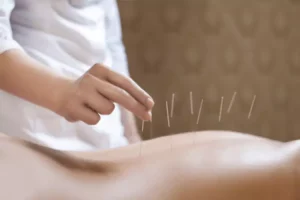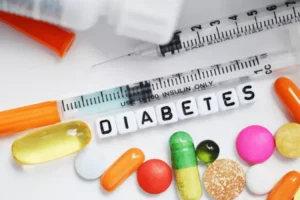
Physical signs of marijuana addiction include red, bloodshot eyes, increased heart rate, and changes in appetite, all of which indicate the drug’s impact on the body. Certain private therapists may also specialize in treating marijuana dependence. Insurance plans are required to cover treatment for substance use disorders, including marijuana use disorder. The risks of marijuana use involve cognitive decline, respiratory issues, and an elevated likelihood of developing mental health disorders such as anxiety, depression, and psychosis. Prolonged use also leads to impaired brain development, particularly in adolescents, and a nascent risk of cardiovascular complications. U.S. public support for marijuana legalization has risen significantly over the is marijuana addictive past six decades, rising from 12% in 1969 to a peak of 70% in 2023 before stabilizing at 68% in 2024, as recounted by Gallup.
What Are the Early Warning Signs of Marijuana Addiction?

In severe cases, individuals experience hyperactivity, pathological behavioral changes, Substance abuse sudden elevated blood pressure, chest pain, heart rhythm disturbances, heart attack, stroke, or seizures. It’s important to note that while fatal overdoses are extremely rare, the adverse effects are enormous and require medical attention. Marijuana addiction occurs when dependence on the drug precipitates withdrawal symptoms, such as irritability, insomnia, and cravings. Chronic use results in Cannabis Use Disorder (CUD), affecting daily life and mental well-being.

What professional/medical staff work at Mel Trotter Ministries?
The physical effects of marijuana addiction include a range of health issues that deteriorate the body over time. Chronic respiratory problems, such as bronchitis, develop due to the inhalation of smoke, leading to persistent coughing and breathing difficulties. Marijuana use also weakens the immune system, increases heart rate, and impairs motor coordination. Additionally, marijuana addiction leads to cannabinoid hyperemesis syndrome, which is debilitating and requires medical treatment. The effects of marijuana addiction involve physical health, mental well-being, and social interactions, which severely impact an individual’s overall quality of life.

Aftercare and Ongoing Support
- Whether you need short-term detox or long-term rehab, accredited centers can help.
- In the short term, marijuana use impairs memory, cognition, and motor coordination, leading to difficulty concentrating, slower reaction times, and altered judgment.
- By providing a safe and supportive environment during detox, we help patients begin their recovery journey on a strong and stable foundation.
- We do not receive any commission or fee that is dependent upon which treatment provider a caller chooses.
This addiction manifests through a variety of physical, psychological, and behavioral symptoms. According to the National Institute on Drug Abuse (NIDA), about 30% of marijuana users develop some degree of marijuana use disorder. The Centers for Disease Control and Prevention (CDC) adds that individuals who begin using marijuana before the age of 18 are four to seven times more likely to develop a use disorder compared to adults. Supporting this approach, research underscores the efficacy of behavioral therapies, particularly cognitive-behavioral therapy (CBT), in the treatment of substance use disorders.
- For individuals struggling with mild to moderate Marijuana Addiction, we also offer online outpatient treatment programs.
- During this time, individuals experience symptoms like anxiety, insomnia, and irritability.
- Trying to quit on your own is possible, but it can be challenging without the accountability, support, and guidance of professional treatment.
- Marijuana addiction, clinically termed cannabis use disorder, is a chronic condition marked by compulsive marijuana use despite adverse effects on mental, physical, and social well-being.
- Inpatient treatment for addiction can include a combination of cognitive behavioral therapy, motivational enhancement therapy and contingency management approaches.
According to the United Nations Office on Drugs and Crime (UNODC), an estimated 200 million people worldwide used marijuana in 2020, making it the most widely consumed illicit drug. You can also speak with the person you love, whose marijuana use has become problematic, to let them know you’re concerned for them and their substance use. Last, you can help this person seek proper treatment options or research treatment options for them. The length of treatment depends on several factors, including your needs, level of care, substance used, severity of your disorder, other co-occurring conditions, among other things. Innovo Detox is proud to provide detox and treatment solutions from our location in Pennsylvania to individuals living in Pennsylvania Maryland, Washington DC, Virginia, New Jersey, New York, Delaware, Connecticut, North Carolina. According to the National Institute on Drug Abuse (NIDA), about 9% of individuals who use marijuana develop an addiction, with rates increasing for those who begin in adolescence or use high-potency products.
This might manifest as missed deadlines, poor attendance, decreased productivity, or failing grades, reflecting the drug’s interference with an individual’s ability to fulfill their roles. This is characterized by consuming more marijuana than originally planned or being unable to stop or cut down usage despite a desire to do so. Individuals may spend excessive time obtaining, using, or recovering from marijuana, often at the expense of other activities or obligations. A previously criminalized drug across the country, marijuana is now widely legalized in many areas for medicinal and recreational use. Family members are often the first to notice a loved one’s struggle with marijuana use and addiction. Because of this, they can be the first to intervene through a formal intervention or a more casual conversation voicing their concerns and asking how they can help.